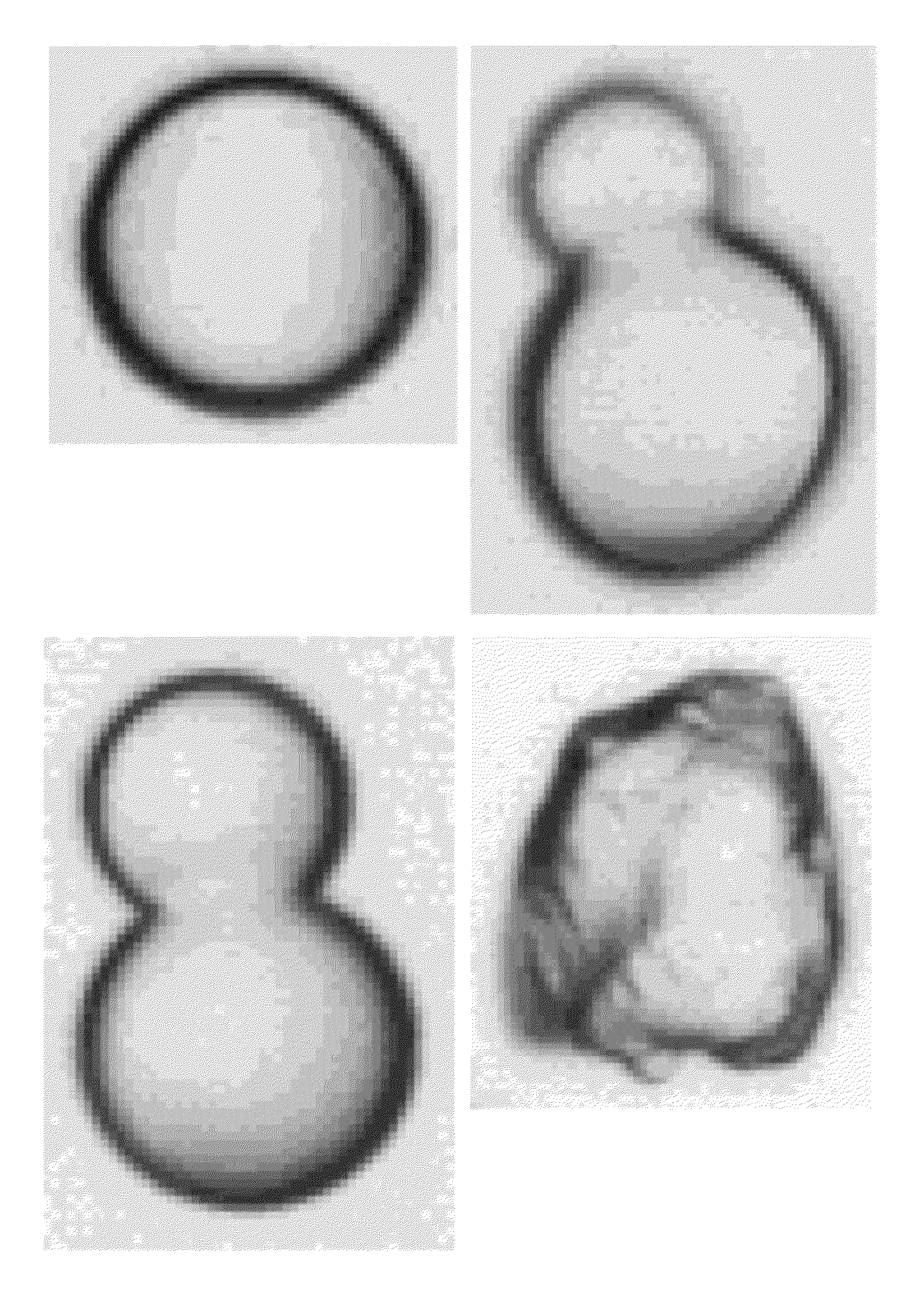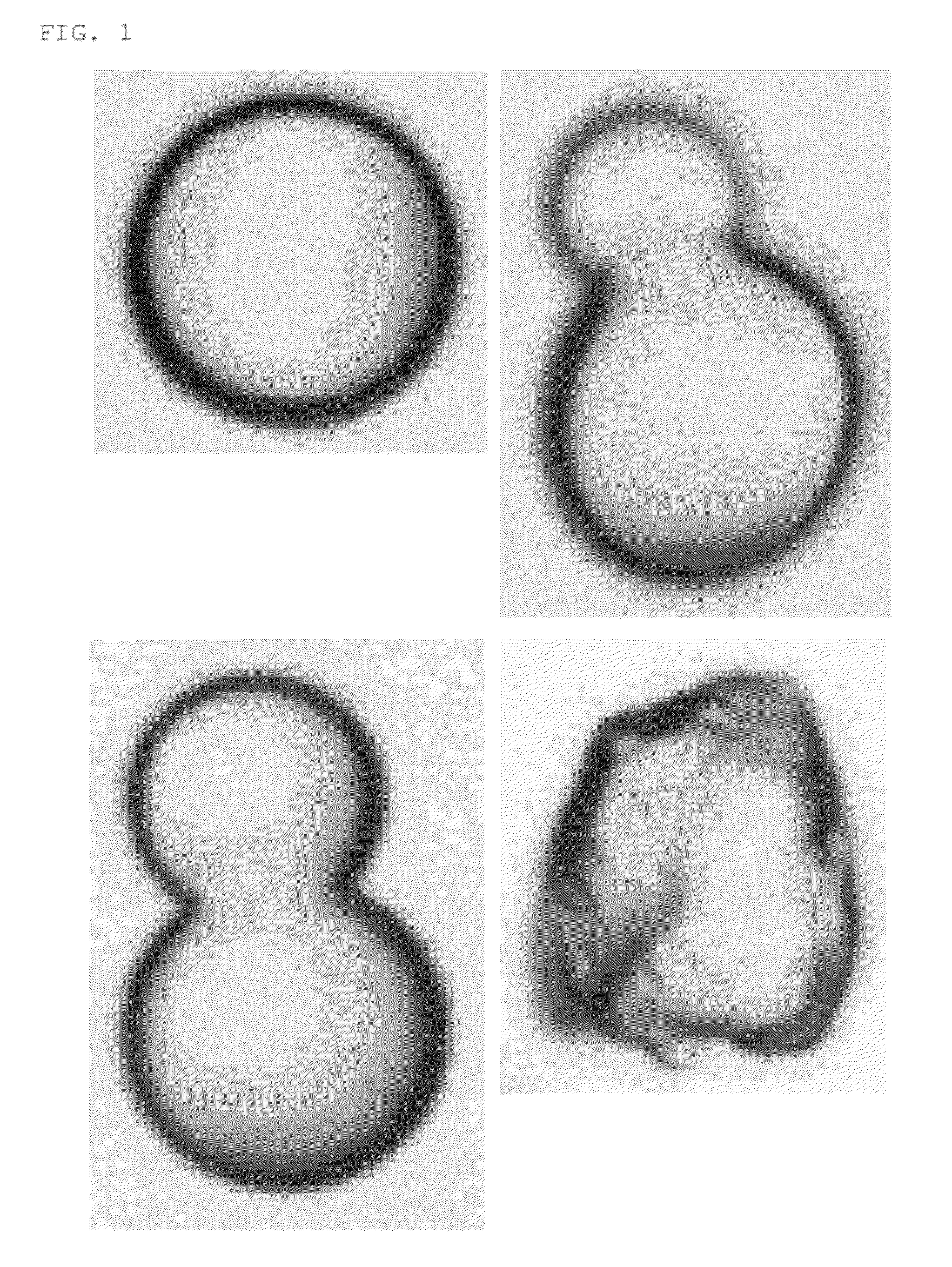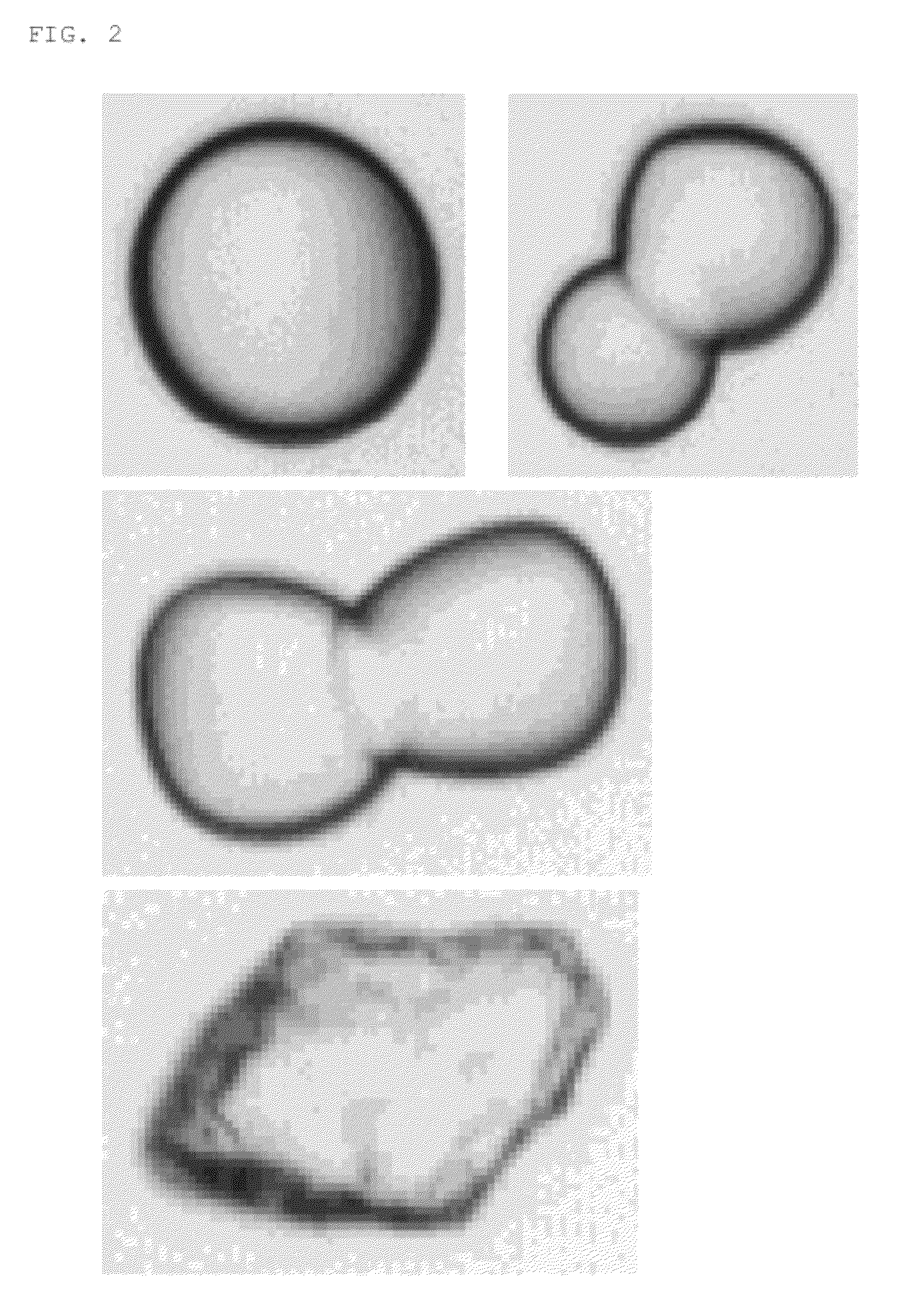Synthetic amorphous silica powder and method for producing same
a technology of synthetic amorphous silica and silica powder, which is applied in the direction of synthetic resin layered products, natural mineral layered products, energy-based chemical/physical/physical-chemical processes, etc., can solve the problems that the purity of obtained raw materials has not been fully satisfied, and achieve the effect of reducing the amount of gas bubble generation or the degree of expansion
- Summary
- Abstract
- Description
- Claims
- Application Information
AI Technical Summary
Benefits of technology
Problems solved by technology
Method used
Image
Examples
example 1
[0143]Firstly, ultrapure water was prepared in an amount equivalent to 55.6 mols, per 1 mol of silicon tetrachloride. This ultrapure water was brought into a vessel, and then the carbon tetrachloride was added thereinto, with stirring while keeping the temperature at 25° C. in an atmosphere of nitrogen, thereby hydrolyzing the silicon tetrachloride. After addition of the silicon tetrachloride, stirring was continued for 2 hours, thereby producing a siliceous gel. At this time, the stirring speed was set to be 100 rpm. Next, the siliceous gel was transferred into a container for drying which was brought into a drier, and the siliceous gel was dried for 24 hours at a temperature of 200° C. while flowing nitrogen through within the drier at a flow rate of 10 L / min, thereby obtaining a dry powder. This dry powder was then taken out of the drier, and pulverized by a roll crusher. At this time, pulverizing was conducted by adjusting a roll gap to 0.2 mm and a roll revolution speed to 40 r...
example 2
[0147]Firstly, 2 mols of ultrapure water and 2 mols of ethanol were prepared per 1 mol of tetramethoxysilane. The prepared ultrapure water and ethanol were charged into a vessel, and then the tetramethoxysilane was added thereinto, with stirring while keeping the temperature at 60° C. in an atmosphere of nitrogen, thereby hydrolyzing the tetramethoxysilane. After addition of the tetramethoxysilane, stirring was continued for 60 minutes, and 30 mols of ultrapure water was further added thereinto per 1 mol of tetramethoxysilane, followed by continued stirring for 5 hours, thereby producing a siliceous gel. At this time, the stirring speed was set to be 100 rpm. Next, the siliceous gel was transferred into a container for drying which was brought into a drier, and the siliceous gel was dried for 48 hours at a temperature of 200° C. while flowing nitrogen through within the drier at a flow rate of 20 L / min, thereby obtaining a dry powder. This dry powder was then taken out of the drier,...
example 3
[0151]Firstly, 10 mols of ultrapure water was prepared per 1 mol of fumed silica having an average particle diameter D50 of 0.030 μm and a specific surface area of 50 m2 / g. The prepared ultrapure water was charged into a vessel, and then the fumed silica was added thereinto, with stirring while keeping the temperature at 25° C. in an atmosphere of nitrogen. After addition of the fumed silica, stirring was continued for 3 hours, thereby producing a siliceous gel. At this time, the stirring speed was set to be 30 rpm. Next, the siliceous gel was transferred into a container for drying which was brought into a drier, and the siliceous gel was dried for 12 hours at a temperature of 300° C. while flowing nitrogen through within the drier at a flow rate of 10 L / min, thereby obtaining a dry powder. This dry powder was then taken out of the drier, and pulverized by a roll crusher. At this time, pulverizing was conducted by adjusting a roll gap to 0.5 mm and a roll revolution speed to 100 rp...
PUM
| Property | Measurement | Unit |
|---|---|---|
| frequency | aaaaa | aaaaa |
| temperature | aaaaa | aaaaa |
| temperature | aaaaa | aaaaa |
Abstract
Description
Claims
Application Information
 Login to View More
Login to View More - R&D
- Intellectual Property
- Life Sciences
- Materials
- Tech Scout
- Unparalleled Data Quality
- Higher Quality Content
- 60% Fewer Hallucinations
Browse by: Latest US Patents, China's latest patents, Technical Efficacy Thesaurus, Application Domain, Technology Topic, Popular Technical Reports.
© 2025 PatSnap. All rights reserved.Legal|Privacy policy|Modern Slavery Act Transparency Statement|Sitemap|About US| Contact US: help@patsnap.com



